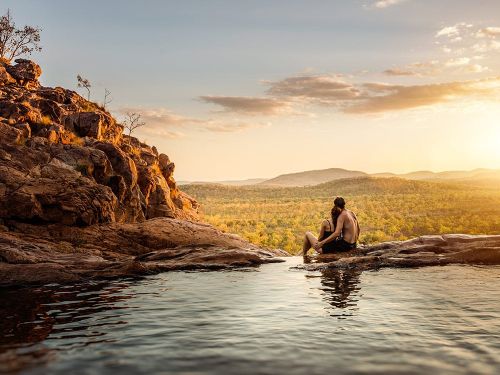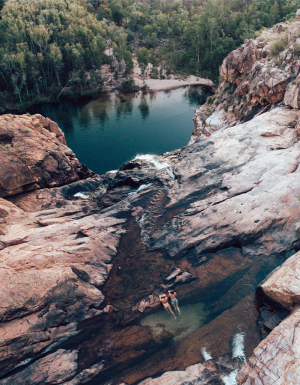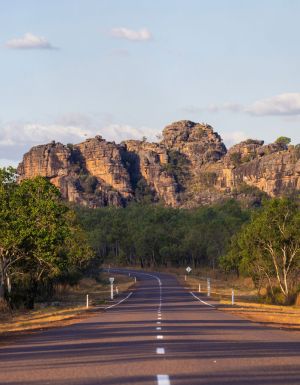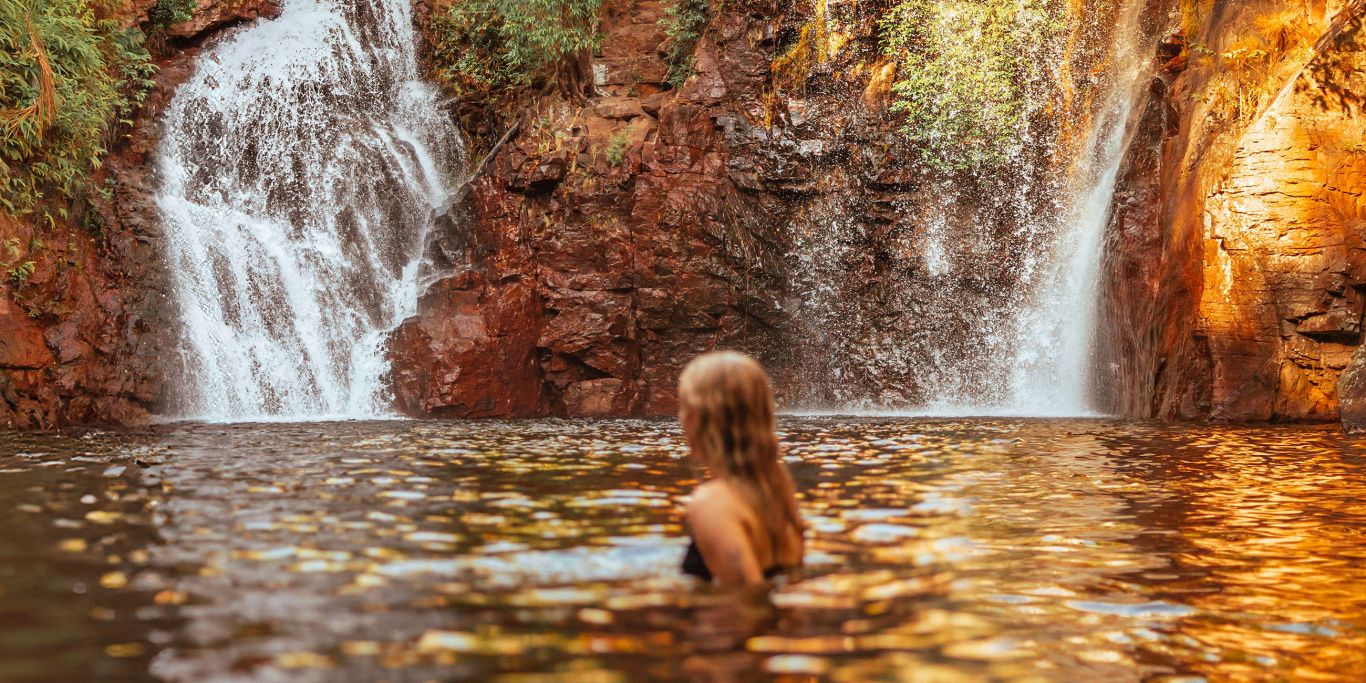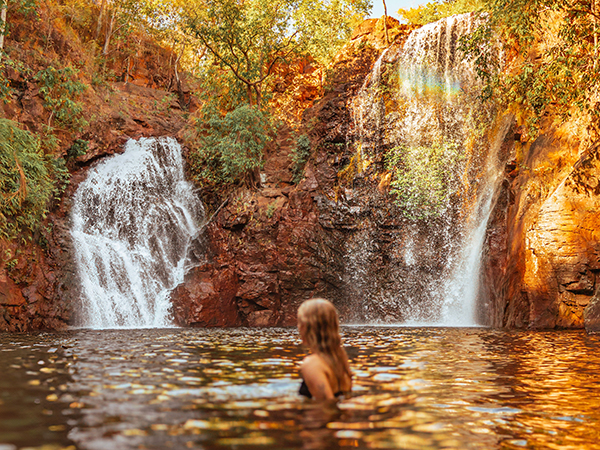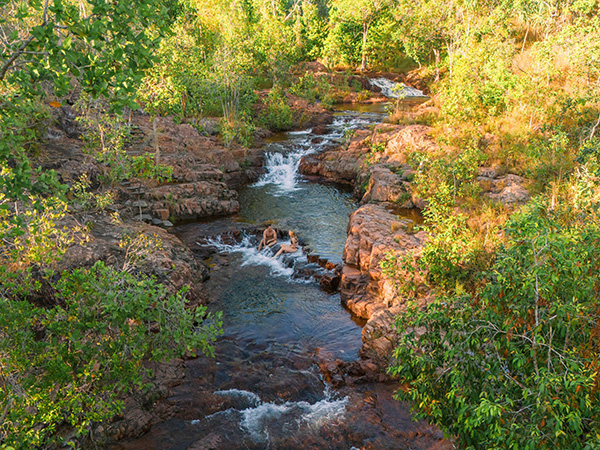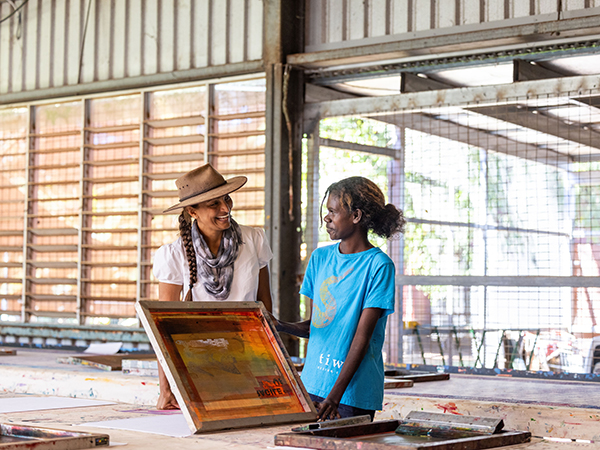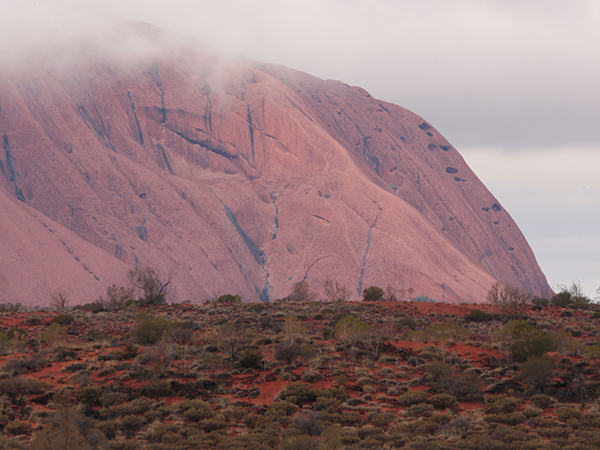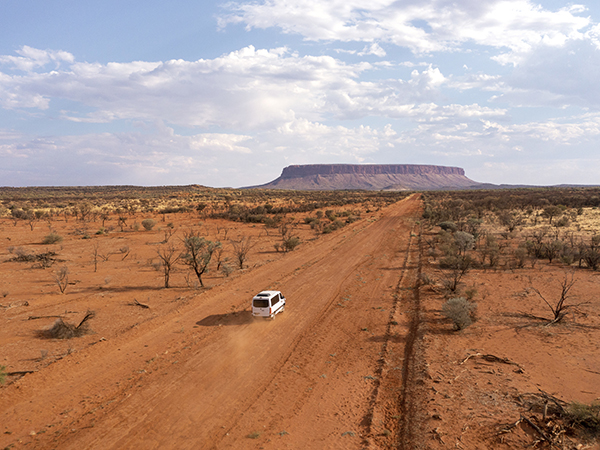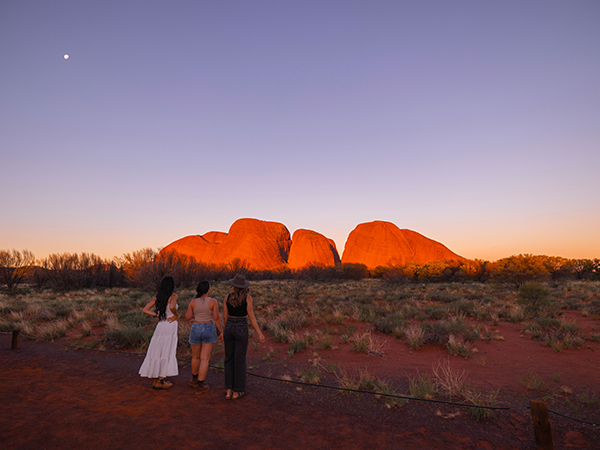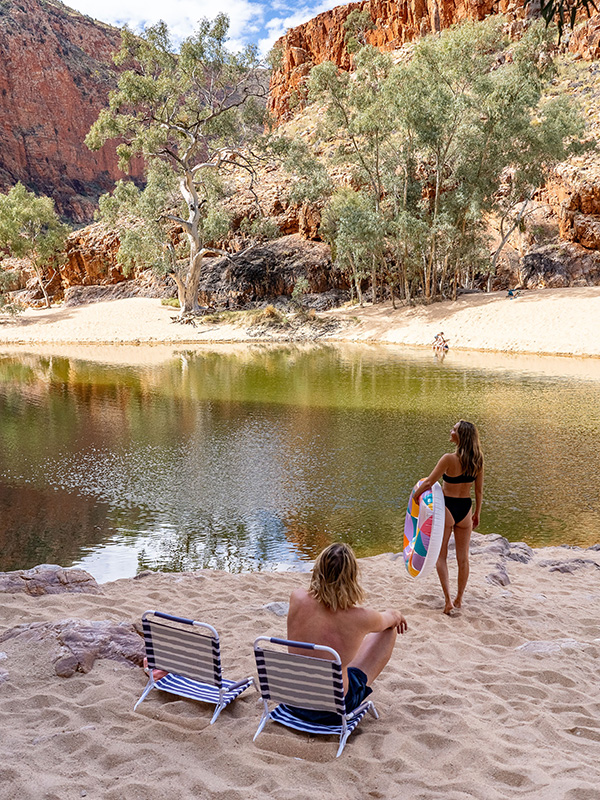Delve deep into one of Australia’s most fascinating and remote regions on this epic road trip through Kakadu and Arnhem Land.
Day one: Darwin to Jabiru
It’s Australia’s northernmost capital city and has a reputation for a heady mix of Asian cuisine, outdoor markets and movies, and fascinating war history – quite simply, Darwin is a holiday in itself. But it’s also the gateway to the country’s largest national park, UNESCO World Heritage-listed Kakadu and Arnhem Land, probably Australia’s most undiscovered and underrated regions.
Leave the city sights for another trip, hire a 4WD from the airport and hit Arnhem Highway for Jabiru, 253 kilometres away. Call into Bowali Visitor Centre to get a lay of the land before checking into Mercure Kakadu Crocodile Hotel (in the shape of a croc). Enjoy a well-deserved float in the pool after a big travel day.
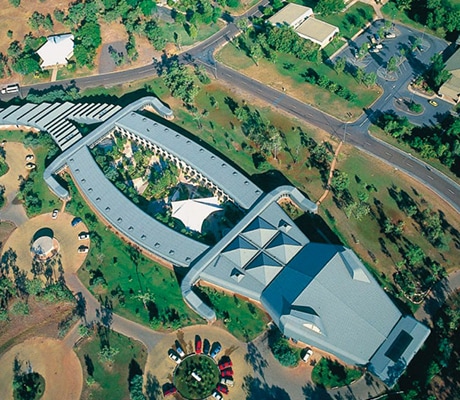
Day two: Ubirr
Rise early and lather up with sunscreen to explore Ubirr , an Aboriginal rock-art site that will impress the littlest of travellers. From the main car park, there’s an easy one-kilometre walking loop that leads visitors past galleries of ancient illustrations. If you’re travelling with kids, tell them to keep an eye out for the thylacine. Climb the steps to a natural lookout over Nadab floodplain and Arnhem Land; views run to the horizon over a lime landscape and you’d be hard-pressed not to be moved by the swathes of empty space. For a more in-depth experience, join a ranger-guided tour.
You should also check out Cahills Crossing, a popular spot for croc-watching at East Alligator River – be sure to stay clear of the water. Before returning to the hotel, swing past Foodland grocery store in Jabiru to stock up on basic snacks, such as trail mix and energy-boosting muesli bars.
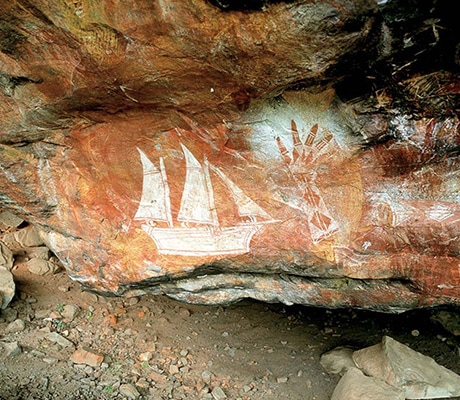
Day three: Maguk Waterfall
Kakadu is famous for its waterfalls, which thunder during the wet (November to April) and mollify in the dry (May to October). The best time to see them is in winter, when you can hike to their base and enjoy refreshing dips. Today, check out of your Jabiru accommodation and hit the 4WD-only road to Maguk Waterfall , which leads to the trail head of a gentle two-kilometre (return) walk through monsoon forest.
The relatively easy access to the falls makes it one of the most popular Kakadu attractions, so set out early to enjoy a swim in the freshwater plunge pool before midday crowds arrive. Then it’s time to kick up orange dust on another 4WD-only road, this time to Gunlom campground , ahead of tomorrow’s adventure.
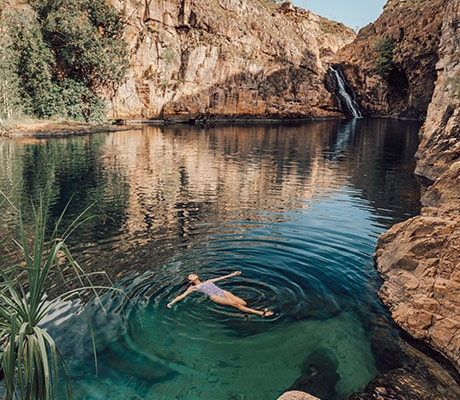
Day four: Gunlom Falls
The eerily beautiful pools atop Gunlom Falls are a highlight on any Kakadu itinerary. To reach the top, you’ll need to tackle a steep climb for about 30 minutes, so rise with the sun while the air is cool and the track empty. Once there, you’ll discover tiered pools of fresh, ink-like water that are oh-so-inviting. Snap a photo at the edge of the natural infinity pool for the ’gram before bobbing about in a BYO inflatable ring.
Back at the base of the escarpment, follow a path around to a large pool where you can enjoy another swim before returning to your campsite for a picnic lunch. In the afternoon, make your way to Cooinda Campground (there’s motel facilities too), about two hours’ drive away.
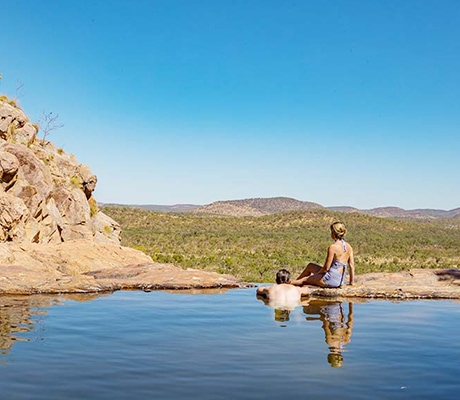
Day five: Burrungkuy (Nourlangie) and Yellow Water
If you loved the rock art of Ubirr, you’ll also want to make time to visit Burrungkuy (Nourlangie ). The art here depicts the life of the Indigenous Bininj people and there are ranger-guided walks during the dry season. Another not-to-miss attraction is Ngurrungurrudjba (Yellow Water). If you visit in the dry, you can explore the floodplain via a 2.6-kilometre (return) walk to a boardwalk and viewing platform, where you’ll be able to spot saltwater crocodiles.
If you’d rather be on the water, join a Yellow Water Cruises’ sunset tour of Yellow Water Billabong and South Alligator River. The Indigenous-owned and operated trips give you plenty of time to admire Kakadu’s wildlife, including black-necked storks and tree snakes.
Days six to nine: East Arnhem Land
Take your adventure up a notch by heading into East Arnhem Land, one of the last truly remote areas of Australia. The best way to explore the Indigenous region is by joining a tour, such as a chartered fishing trip or cultural excursion, however it’s wise to give yourself a day to reach your accommodation (simple lodges, motels and campgrounds) and settle into Arnhem life. To enter the region, a permit from Northern Land Council is required; if you have a guide, ask if they can arrange one.
If you’d rather join a tour from Kakadu, our pick is Venture North Safaris’ 4-day Arnhem Land and Cobourg Peninsula Tour . It’s a round-trip from Jabiru and takes in popular Injalak Arts centre, the ruins of Victoria Settlement (a former British military outpost), turtle nesting areas and Cobourg wetlands. There are also , as well as fly-in/fly-out fishing charters if you’re keen to bag a barra.
If you have plenty of time or yearn to learn more, visit Arnhem Land during the annual Garma Festival, a celebration of Indigenous culture (the next one will be in July-August 2021). The festival is held at Gulkula, 30 minutes’ drive from Nhulunbuy; you’ll need prior approval to attend.

Day 10: West Arnhem
If it’s the Top End’s rock art that captivates you, head into West Arnhem for a close-up look at the galleries at Mt Borradaile, a sacred Aboriginal site. Accessible in both the wet and dry seasons, there is a huge collection of art here, including a depiction of the rainbow serpent. Davidson’s Arnhemland Safaris runs tours, along with a few other options, such as billabong sunset cruises and birdwatching. Overnight at the Davidson’s eco lodge.
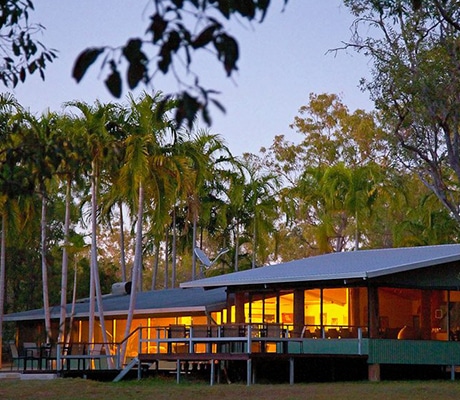
Days 11 and 12: Bremer Island
Ditch the car and catch a 15-minute scenic flight from Gove Airport to Bremer Island for two nights at Banubanu Beach Retreat . The eco-friendly property runs primarily on solar power and offers travellers a back-to-basics hideaway, perfect for unwinding after the adventures of Kakadu. Fill your days chilling in your beachfront glamping tent, fishing for Spanish mackerel, mud crabbing with an Indigenous guide, and bird watching.
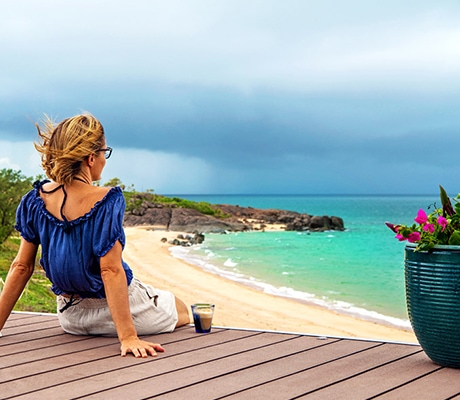
Day 13: Farewell the NT
Say goodbye to this beautiful part of Australia on a flight from Gove Airport back to Darwin and home. Or, better still, add on a few days in Darwin.


